Complete Solutions to Illustrative Example of chapter WAVE OPTICS of Class 12 book with complete answers and questions
| Class 12 | PHYSICS |
| Chapter | WAVE OPTICS |
| PHYSICS GALAXY | Illustrative Example |
| Number Of Questions | 33 |
| Academic Year | 2023-24 |
Determine the resulting intensity due to interference of the two waves at a point given below :
`y_(1) = 3 sin (100 pil)`
`y_(2)=4sin(100pil+(pi)/(3))`
Given that intensity due to first wave is `I_(0)`.04:45View SolutionRadio waves coming at `angle_alpha` to vetical are received by a radar after reflection from a nearby water surface and directly .what should be height of antenna from water surface so that it records a maximum intensity.(Wavelength =`lambda`)
 04:25View Solution
04:25View SolutionTwo coherent light beams of intensities I and 4I superpose in a region. Find the maximum and minimum possible intensities due to superposition in this region.
03:25View SolutionTwo coherent waves are described by the expressions.
`E_(1)=E_(0sin)((2pix_(1))/(lambda)-2pift+(pi)/(6))` and `E_(2)=E_(0)sin((2pix_(2))/(lambda)-2pift+(pi)/(8))`
Determine the relationship between `x_(1)` and `x_(2)` that produces constructive interference when the two waves are superposed?06:41View SolutionIn figure-6.9, a microwave transmitter a height a above the water level of a wide lake transmits microwaves of wavelength `lambda` towards a receiver on the opposite shore, a distance x above the water level. The microwaves reflecting from the water interface with the microwaves arriving directly from the transmitter. Assuming that the lake width D is much greater than a and x, that `lambda gtgt a`, at what values of x is the signal at the receiver maximum?
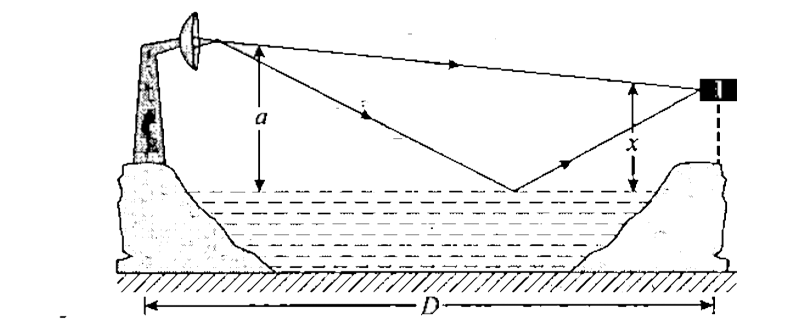 05:46View Solution
05:46View SolutionTwo coherent point sources `S_(1)` and `S_(2)` vibrating in phase emit light of wavelength `lambda`. The separation between the sources is `2lambda`. Consider a line passing through `S_(2)` and perpendicular to line `S_(1) S_(2)`. Find the position of farthest and nearest minima.
 .11:59View Solution
.11:59View SolutionA double-slit experiment, arrangement produces interference fringes for sodium light `(lambda = 589 nm)` that have an angular separation of `3.50 xx 0^(-3)` rad . For what wavelength would the angular separation to `10%` greater?
02:17View SolutionIn a YDSE setup sodium light of wavelength `5893 Å` is being used. The interference pattern is obtained on a screen which is located at a distance 1 m from the slit plane. In the interference pattern it is observed that `10^(th)` bright fringe is located at a distance of 12mm from the central maximum. Find the slit separation.
03:42View SolutionTwo slits in Young's experiment have width in the ratio `1 : 25`. The ratio of intensity at the maxima and minima in the interference pattern `(I_(max))/(I_(min))` is :
04:51View SolutionIn Young's experiment, interference bands are produced on the screen placed at 1.5 m from the two slits 0.15 mm apart and illuminated by light of wavelength `6599 Å`. Find (a) the fringe width and (b) the change in the fringe width if the screen is taken away from the slit by 50 cm.
05:05View SolutionIn Young's double slit experiment the slits are 0.5 mm apart and interference is observed on a screen placed at a distance of 100 cm from the slits. It is found that the `9^(th)` bright fringe is at a distance of 8.835 mm from the second dark fringe from the centre of the fringe pattern. Find the wavelength of light used.
03:56View SolutionA double slit arrangement produces interference fringes for sodium light `(lambda = 5890 Å)` that are `0.40^(@)` apart. What is the angular fringe separation if the entire arrangement is immersed in water?
03:36View SolutionA YDSE setup is immersed in water `(mu = 1.33)`. If has slit separation 1 mm and distance between slits and screen is 1.33m. Incident light on slits have wavelength `6300Å`. Find the fringe width on screen.
03:48View SolutionThere are two coherent sources `S_(1)` and `S_(2)` which produce waves in same phase placed on Y axis at points (0, 2d) and (0, d) as shown in figure-6.23. A detector D is placed at origin which moves along X direction, find the number of maxima recorded by detector excluding points x = 0 and `x = oo`. Given that wavelength of light produced is `6200Å` and separation between sources is 0.34 mm.
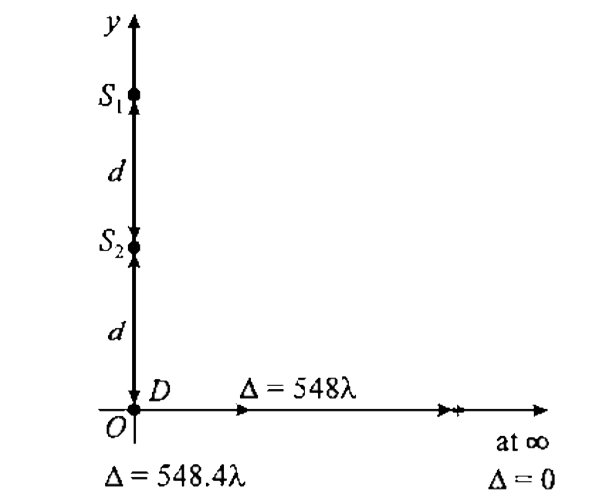 04:49View Solution
04:49View SolutionIn YDSE setup slits are illuminated by a light of wavelength `4000Å` and a light of unknown wavelength. It is observed that fourth dark fringe of known wavelength coincide with second bright fringe of unknown wavelength. Find the unknown wavelength.
02:29View SolutionIn YDSE, light of wavelength `lamda = 5000 Å` is used, which emerges in phase from two slits distance `d = 3 xx 10^(-7) m` apart. A transparent sheet of thickness `t = 1.5 xx 10^(-7) m`, refractive index `n = 1.17`, is placed over one of the slits. Where does the central maxima of the interference now appear from the center of the screen? (Find the value of y?)
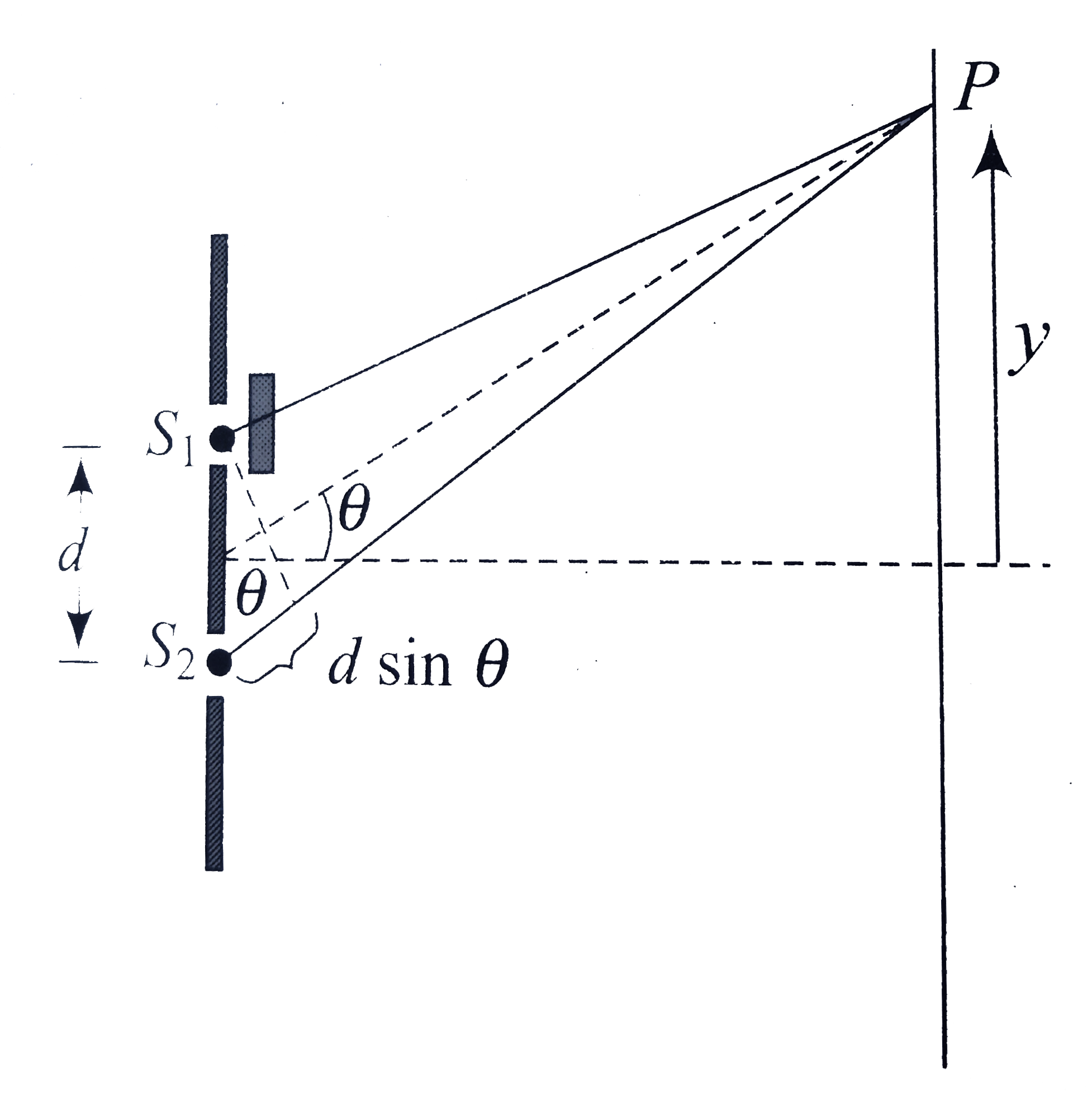 04:31View Solution
04:31View SolutionIn Young's experiment, find the distance between two slits that results in the third minimum for `420 nm` violet light at an angle `30^(@)`
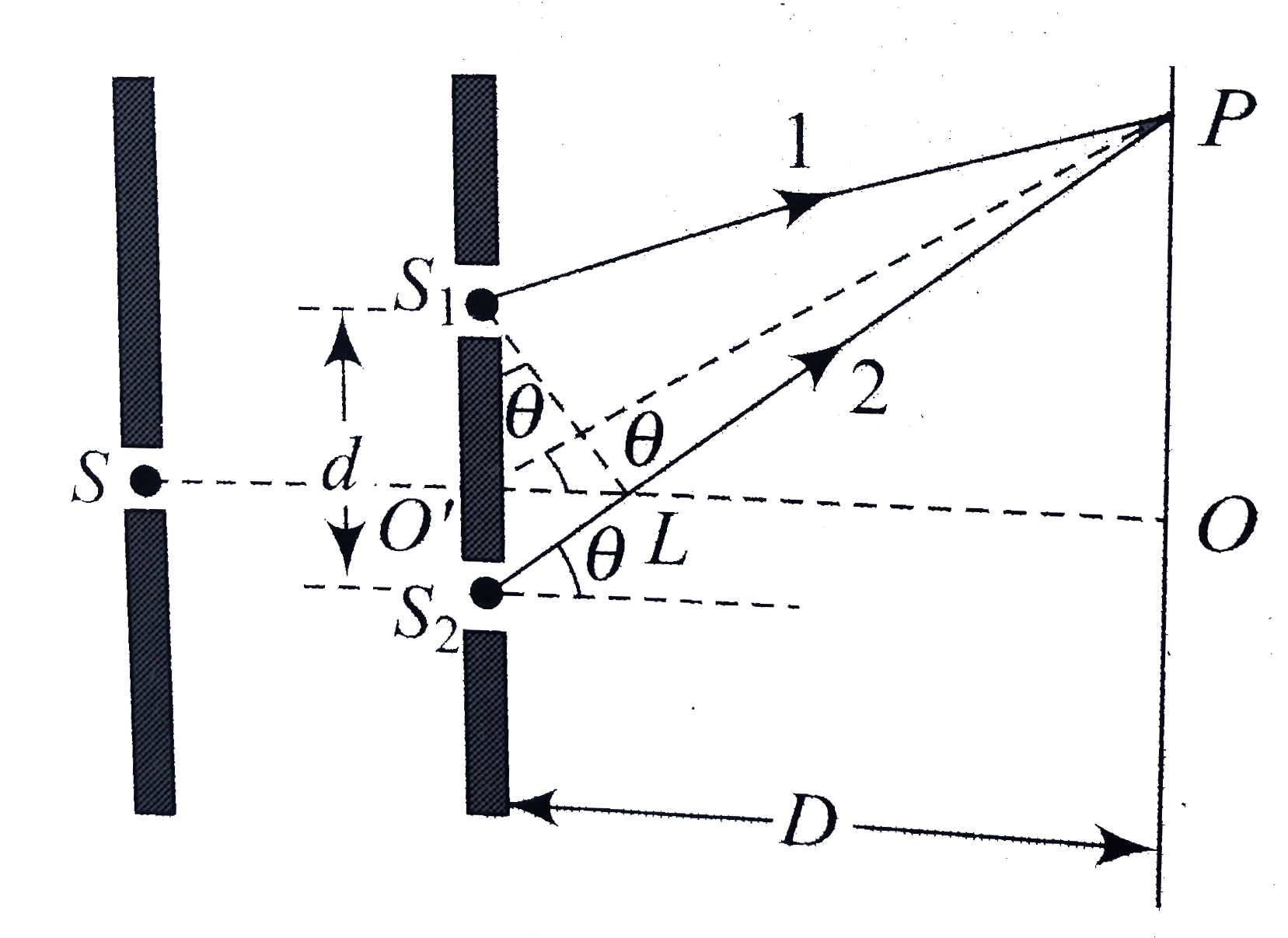 .02:14View Solution
.02:14View SolutionConsider the situation shown in figure-6.35. The two slits `S_(1)` and `S_(2)` placed symmetrically around the central line are illuminated by a monochromatic light of wavelength `lambda`. The separation between the slits is d. The light transmitted by the slits falls on a screen `E_(1)` placed at a distance D from the slits. The slit `S_(3)` is at the central line and the slit `S_(4)` is at a distance z from `S_(3)`. Another screen `E_(2)` is placed a further distance D away from `E_(1)`. Find the ratio of the maximum to minimum intensity observed on `E_(2)` if z is equal is : `(a) (lambdaD)/(2d) " "(b) (lambdaD)/(d)" " (c )(lambdaD)/(4d)`
 10:46View Solution
10:46View SolutionThe two coherent sources of monochromatic light of wavelength `lambda` are located at a separation `lambda`. The two sources are placed on a horizontal line and screen is placed perpendicular to the line joining the sources. Find position of the farthest minima from the centre of the sources.
04:02View SolutionIn a modified Young's double-slit experiment, a monochromatic uniform and parallel beam of light of wavelength `6000 Å` and intensity `(10//pi)` W `m^(-2)` is incident normally on two circular apertures A and B of radii 0.001 m and 0.002 m, respectively. A perfectly transparent film of thickness `2000 Å` and refractive index 1.5 for the wavelength of `6000 Å` is placed in front of aperture A (see the figure). Calculate the power (in mW) received at the focal spot F of the lens. Then lens is symmetrically placed with respect to the aperture. Assume that 10% of the power received by each aperture goes in the original direction and is brought to the focal spot.
 06:22View Solution
06:22View SolutionConsider the arrangement shown in figure-6.38. The distance D is large compared to the separation d between the slits.
(a) Find the minimum value of d so that there is a dark fringe at O.
(b) Suppose d has this value. Find the distance x at which the next bright fringe is formed.
(c ) Find the fringe width.
 12:46View Solution
12:46View SolutionIn Billet's Lens Arrangement, a convex lens of focal length 50 cm is cut along the diameter into two indentical halves `Å` and B and in the process a layer C of the lens thickness 1 mm is lost. Then the two halves A and B are put together to form a composite lens. Now, infront of this composite lens a source of light emitting wavelength `lambda = 6000 Å` is placed at a distance of 25 cm as shown in the figure. Behind the lens there is a screen at a distance 50 cm from it. Find the fringe width fo the interference pattern obtained on the screen.
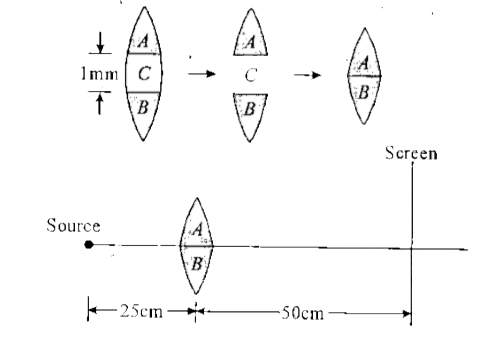 09:52View Solution
09:52View Solutionfigure shows three equidistant slits illuminated by a monochromatic parallel beam of light. Let `BP_0 -AP_0 = lambda/3` and `Dgtgtlambda`.
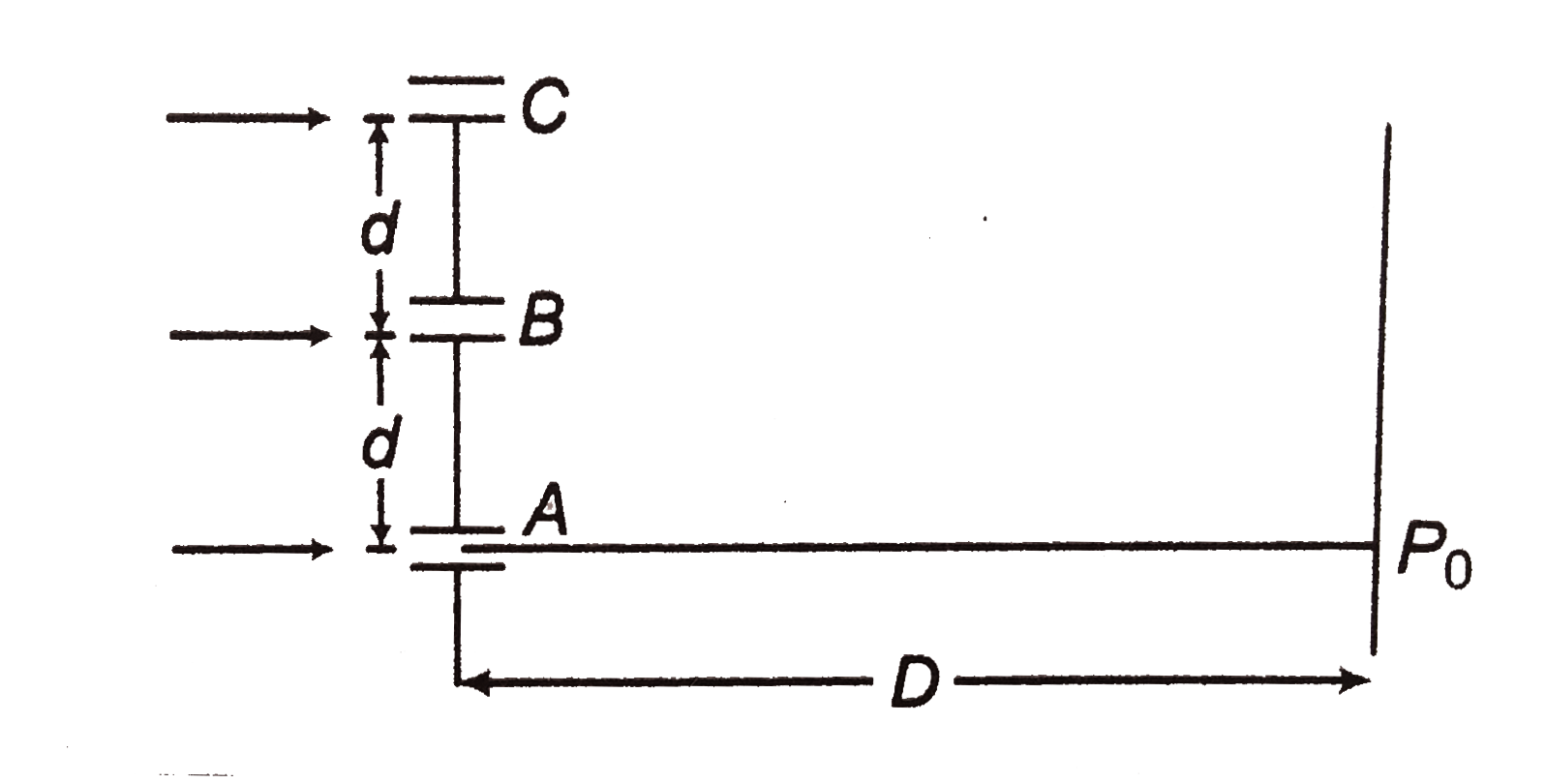
(a) Show that d = `sqrt ((2lambdaD)//3)`
(b) Show that the intensity at `P_0` is three times the intensity due to any of the three slits
individually.11:44View SolutionA glass lens is coated on one side with a thin film of magnesium fluoride `(MgF_(2))`to reduce reflection from the lens surface (Fig. 2.26). The Index of refraction of `MgF_(2)` is 1.38, that of the glass is 1.50. What is the least coating thickness that eliminates (via interference) the reflections at the middle of the visible specturm `(lambda = 550nm)`? Assume that the light is approxmately perpendicular to the lens surface.
 02:11View Solution
02:11View SolutionRefractive index of a thin soap film of a uniform thickness is 1.34. Find the smallest thickness of the film that gives in interference maximum in the reflected light when light of wavelength `5360 Å` fall at normal incidence.
03:08View SolutionA wedge of angle `0.5^(@)` is illuminated with sodium light whose two lines corresponds to the wavelengths `5890Å` and `5896Å`. Find the distance from the apex at which the maxima due to the two wavelengths first coincide when observed in the reflected light. (the wedge contains air)
05:43View SolutionA broad sources of light of wavelength `680nm` illuminated normally two glass plates.`120nm`long that meet at one end and are separated by a wire`0.048 mm`in diameter at the other end,Find the number of bright fringes formed over the `120nm`distance.
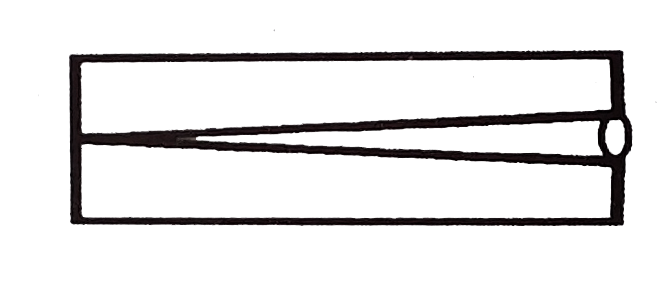 03:23View Solution
03:23View SolutionA parallel beam of monochromatic light of wavelength `4500Å` is allowed to incident on a long slit of width 0.2 mm. Find the angular divergence in which most of the light is diffracted.
05:29View SolutionAngular width of central maximum in the Fraunhoffer diffraction pattern of a slit is measured. The slit is illuminated by light of wavelength `6000Å`. When the slit is illuminated by light of another wavelength, the angular width decreases by `30%`. Calculate the wavelength of this light. The same decrease in the angular width of central maximum is obtained when the original apparatus is immersed in a liquid. Find the refractive index of the liquid.
02:23View SolutionA convex lens of diameter 8.0 cm is used to focus a parallel beam of light of wavelength 620 nm. If the light be focused at a distance of 20 cm from the lens, what would be the radius of the central bright spot formed ?
01:40View SolutionThe axes of a polarizer and an analyzer are oriented at `30^(@)` to each other.
(a) If unpolarized light of intensity `I_(0)` is incident on them, what is the intensity of the transmitted light?
(b) Polarized light of intensity `I_(0)` is incident on this polarizer-analyzer system. If the amplitude of the light makes an angle of `30^(@)` with the axis of the polarizer, what is the intensity of the transmitted light?04:58View SolutionA beam of plane polarised light falls normally on a polariser (cross sectional area `3 xx 10^(-4)m^(2)`) which rotates about the axis of the ray with an angular velocity of `31.4 rad//s`. Find the energy of light passing through polariser per revolution and the intensity of emergent beam, if flux of energy of the incident ray is `10^(-3) W`.
04:05View SolutionThe axes of a polarizer and an analyzer are oriented at right angles to each other. A third Polaroid sheet is placed between them with its axis at `45^(@)` to the axes of the polarizer and analyzer.
(a) If unpolarized light of intensity `I_(0)` is incident on this system, what is the intensity of the transmitted light?
(b) What is the intensity of the transmitted light when the middle Polaroid sheet is removed?04:22View Solution
Illustrative Example questions and complete solutions for chapter WAVE OPTICS of GK PUBLICATIONS PHYSICS (HINGLISH) of Class 12
